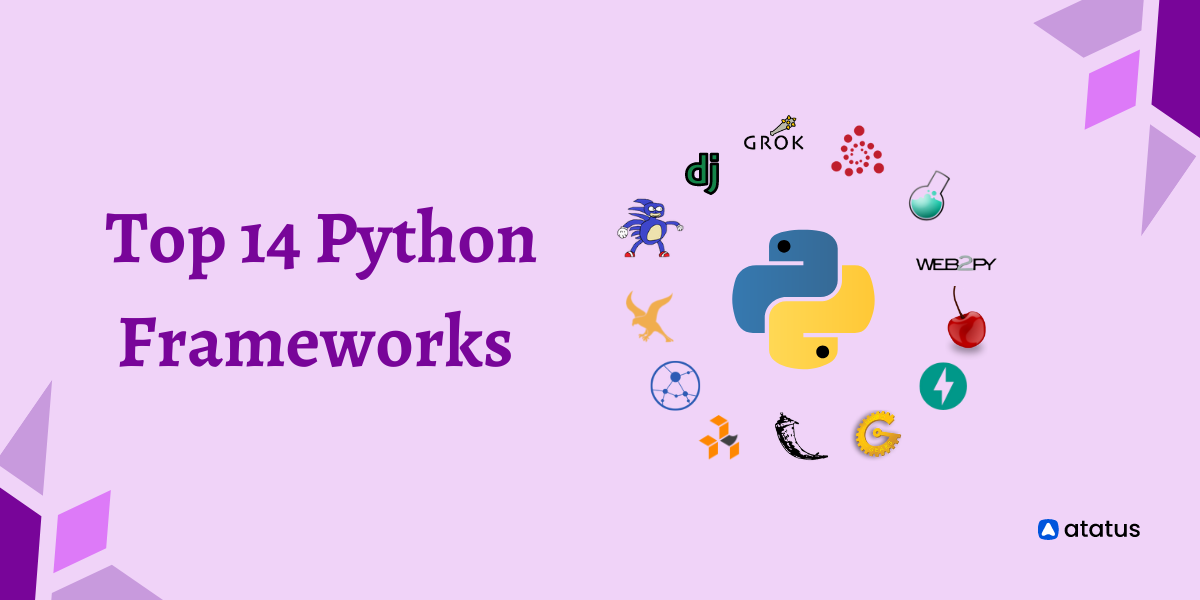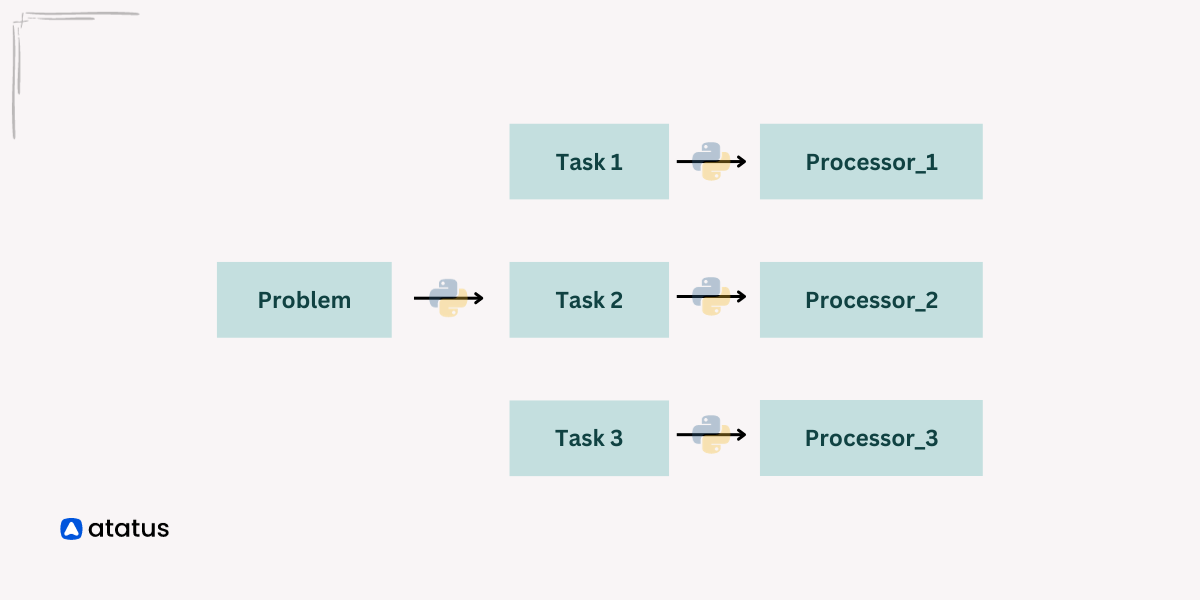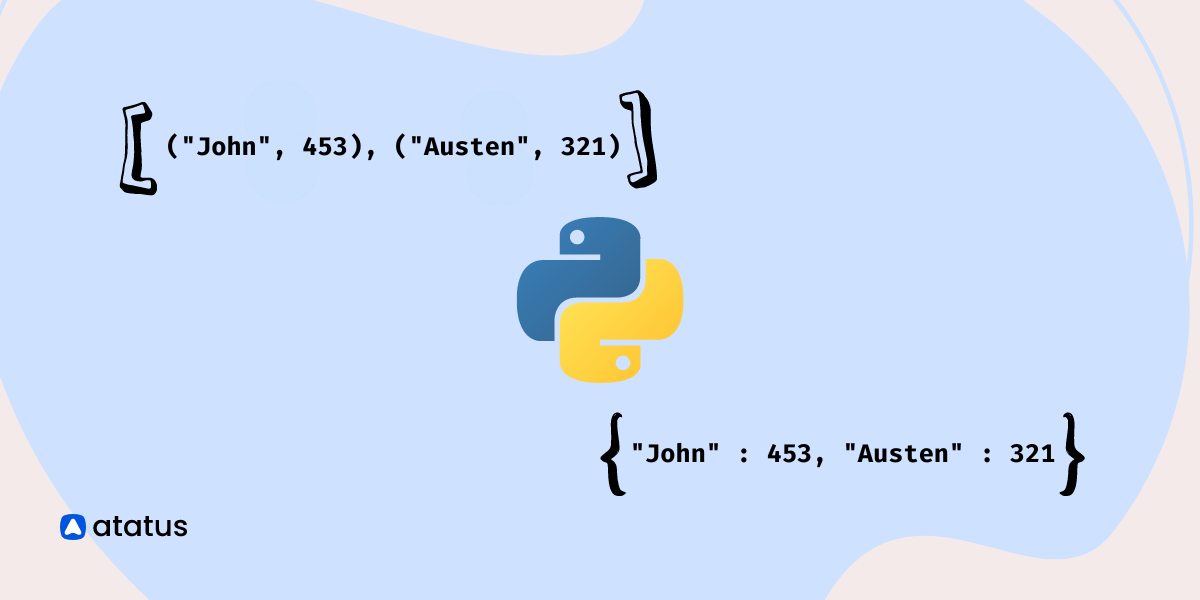Top 14 Python Frameworks in 2024
Python is one of the most popular programming languages in the world today. Its open-source code, powerful development libraries and object-oriented programming style render it an ever favorable option for developers.
Not only its immaculate build but the relevant ease with which it can be learned by even beginners make it an indomitable programming language at present.
Web development, building software, data analysis and visualization are some of the routine tasks generally operated in python.
Web Framework
Web framework refers to all the overhead processes involved while creating a new web application. It lays a standardized procedure for developing and deploying these applications on the internet.
This may include libraries, template processors and session managers. Python frameworks can either be full-stack or non-full-stack depending on the size of your project.
The majority of Web frameworks are exclusively server-side technology, although, with the increased prevalence of AJAX, some Web frameworks are beginning to include AJAX code that helps developers with the particularly tricky task of programming (client-side) the user's browser. At the extreme end of the client-side Web Frameworks is technology that can use the web browser as a full-blown application execution environment.
What makes python a popular option?
- Fast, powerful and productive
- Less coding, more functions
- Extensible and integrable
- User friendly, runs everywhere
- Readable, flexible and secure
- Works on website as well as mobile device
- Can combine machine learning and AI
Let’s discuss some of the promising web development frameworks in python for every developer out there:
- Django
- TurboGears
- Web2Py
- Bottle
- Grok
- CherryPy
- Flask
- Sanic
- CubicWeb
- Pyramid
- Falcon
- AioHTTP
- Tornado
- FastAPI
Django
Django is one of the most popular python framework available now. It is a python framework with DRY( don't repeat yourself) concept. It has a model-view-template architectural pattern and emphasizes on reusability of components. Its flexibility makes it a desired choice for start-ups that are working on a restrained budget.
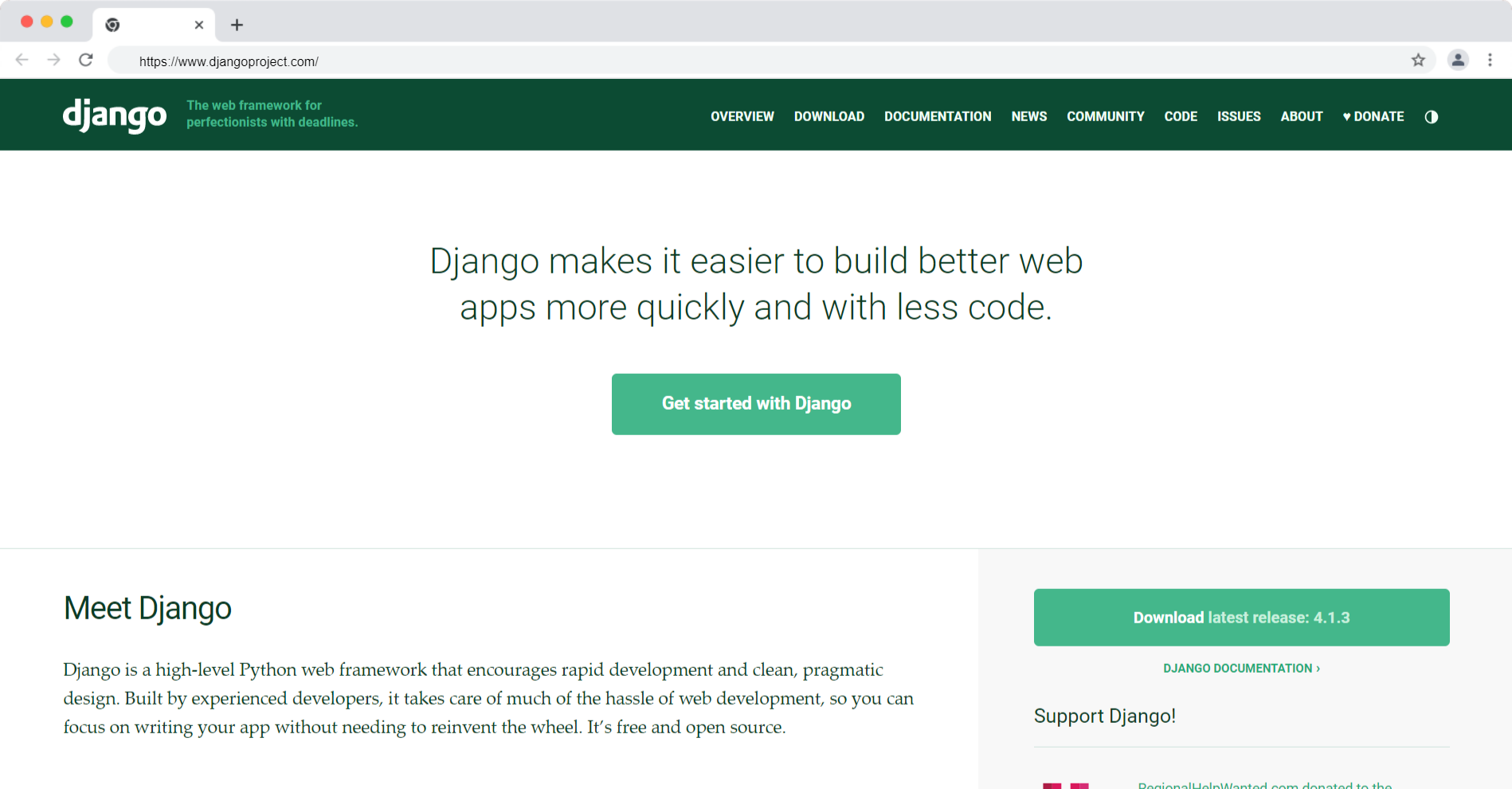
Highlights
- Follows MVT (model-view-template) pattern
- Vast library collections for full-stack web development
- Supports URL routing
- Data is delivered as object relational mapping (ORM)
- Supports databases like MySQL, SQLite, Oracle and PostgreSQL.
- Adaptable to third party drivers
- Built-in authentication system
Due to availability of multiple libraries and its ability to migrate from one database to another, Django is one of the most popular web development framework in use at present.
TurboGears
TurboGears is a full-stack web development framework designed around MVC architecture like ruby on rails or struts. It is lightweight and flexible. Can be used to build both big and small web applications.
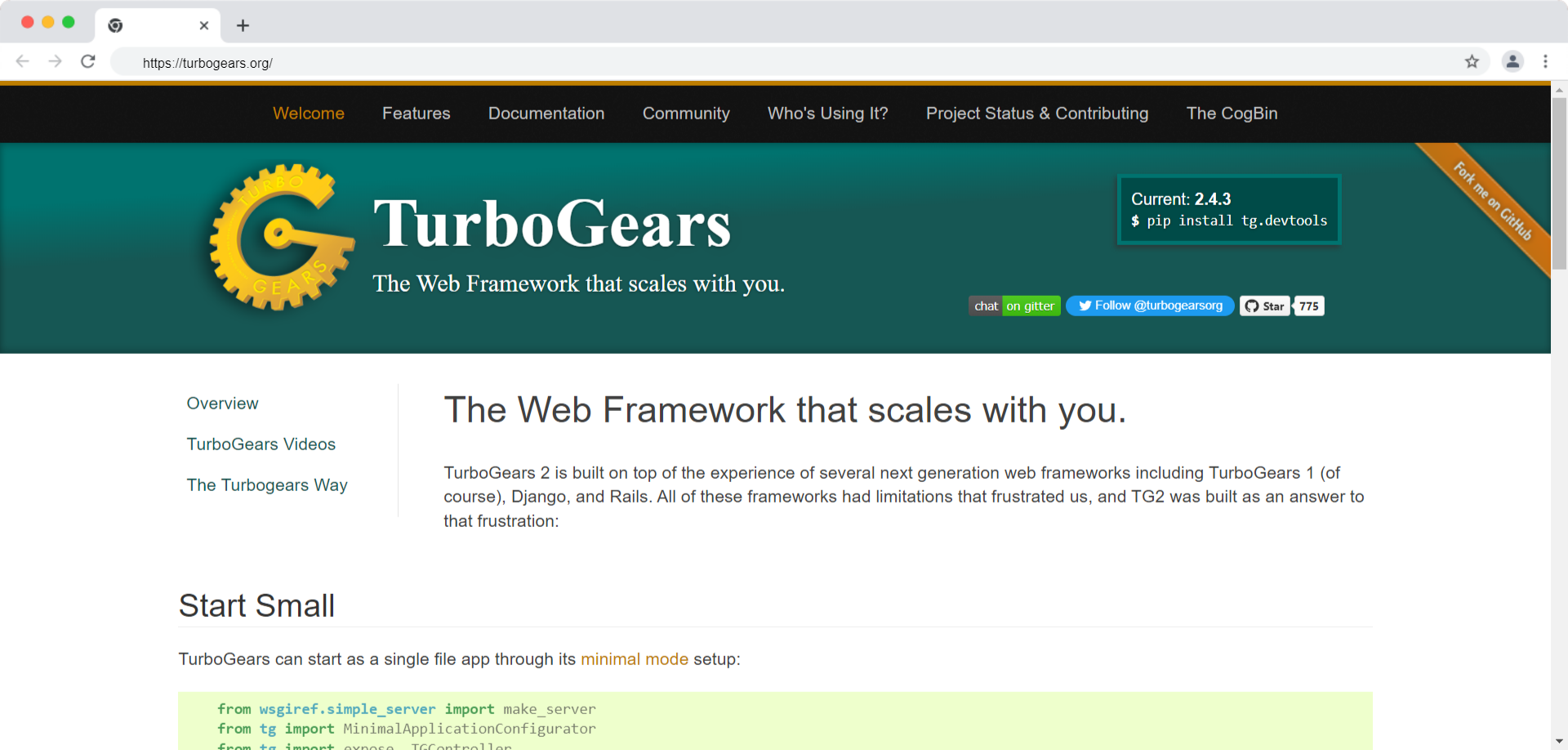
Highlights -
- Can work on databases like SQLAlchemy, Genshi , Webob and Repoze
- ORM enabled
- Supports web servers like pylons
- AJAX compatibility for server-side operations
- Can integrate with JavaScript libraries like MochiKit
- Web server gateway interface(WSGI) for embedding widgets
- Features are achieved as function decorators
Originally built to address inadequacy of web development environments on mobile devices, TurboGears allows rapid creation of extensible data-driven apps.
Web2Py
Web2Py is a full-stack web development tool compatible on both web-based and mobile-based applications. It is a scalable program works efficiently on all operating systems. It need not be installed separately, can be used off a USB drive.
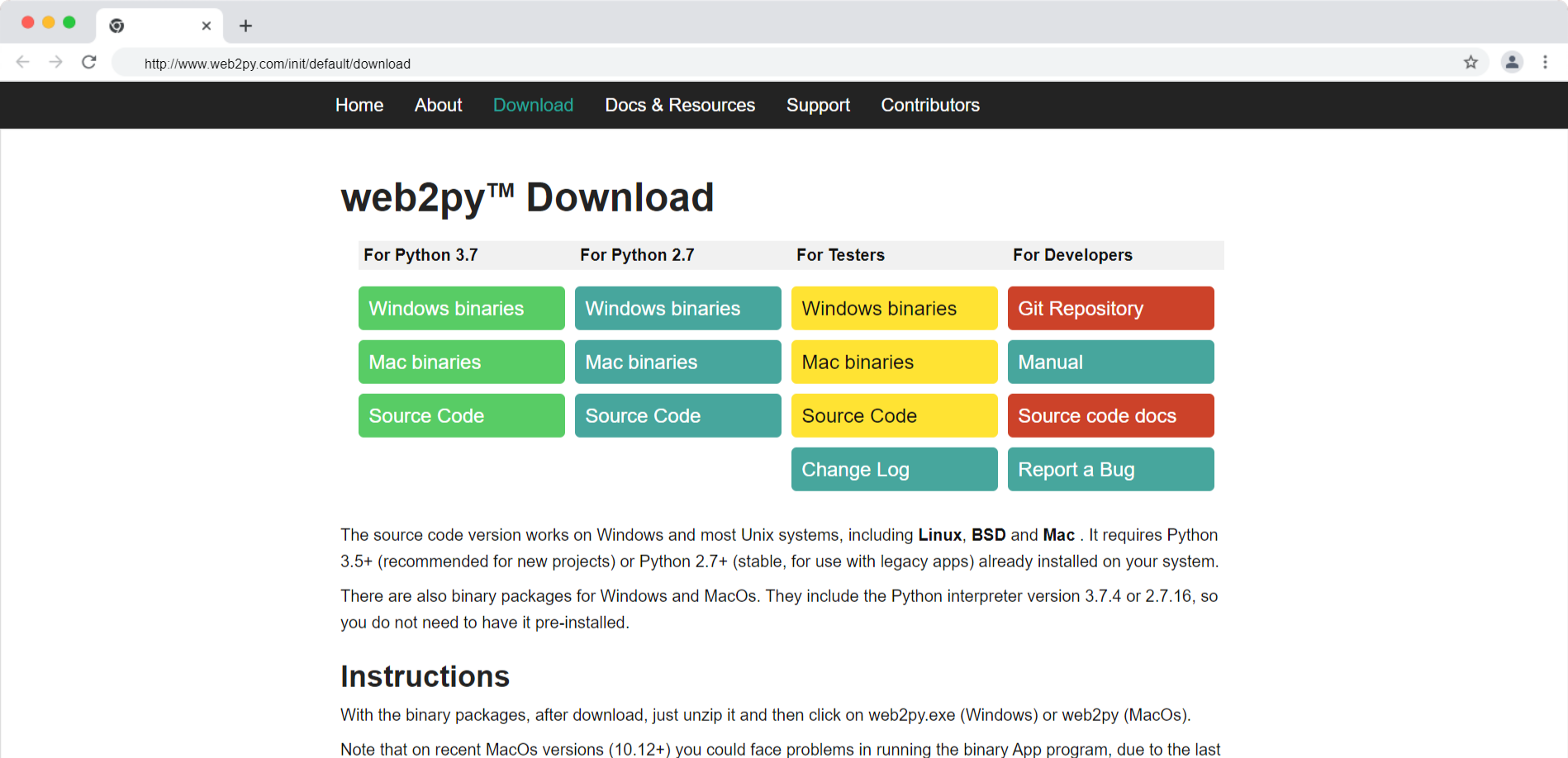
Highlights
- Built-in ticketing system to manage errors
- Works on Unix/Linux, Windows, Mac, Google App engine.
- Web-based IDE containing deployer, debugger and code editor.
- Includes libraries to handle XML,HTML, RSS, ATOM, CSV etc
- Supports MVC architecture for easier web-app development
- Backward compatibility
- Provides security against cross-site scripting, injection flaws, and execution of infected files.
Since there is no need for separate installation and configuration, Web2Py is a big hit amongst developers looking for faster development of applications.
Bottle
Bottle is a fast and simple micro-framework for small-web applications. It uses a single standard library of code - python standard library. This library includes a built-in template engine, exceptions and other features. If you are a beginner and want to learn more about how these frameworks work and learn how to build personal-use apps then bottle would be the right fit for you.
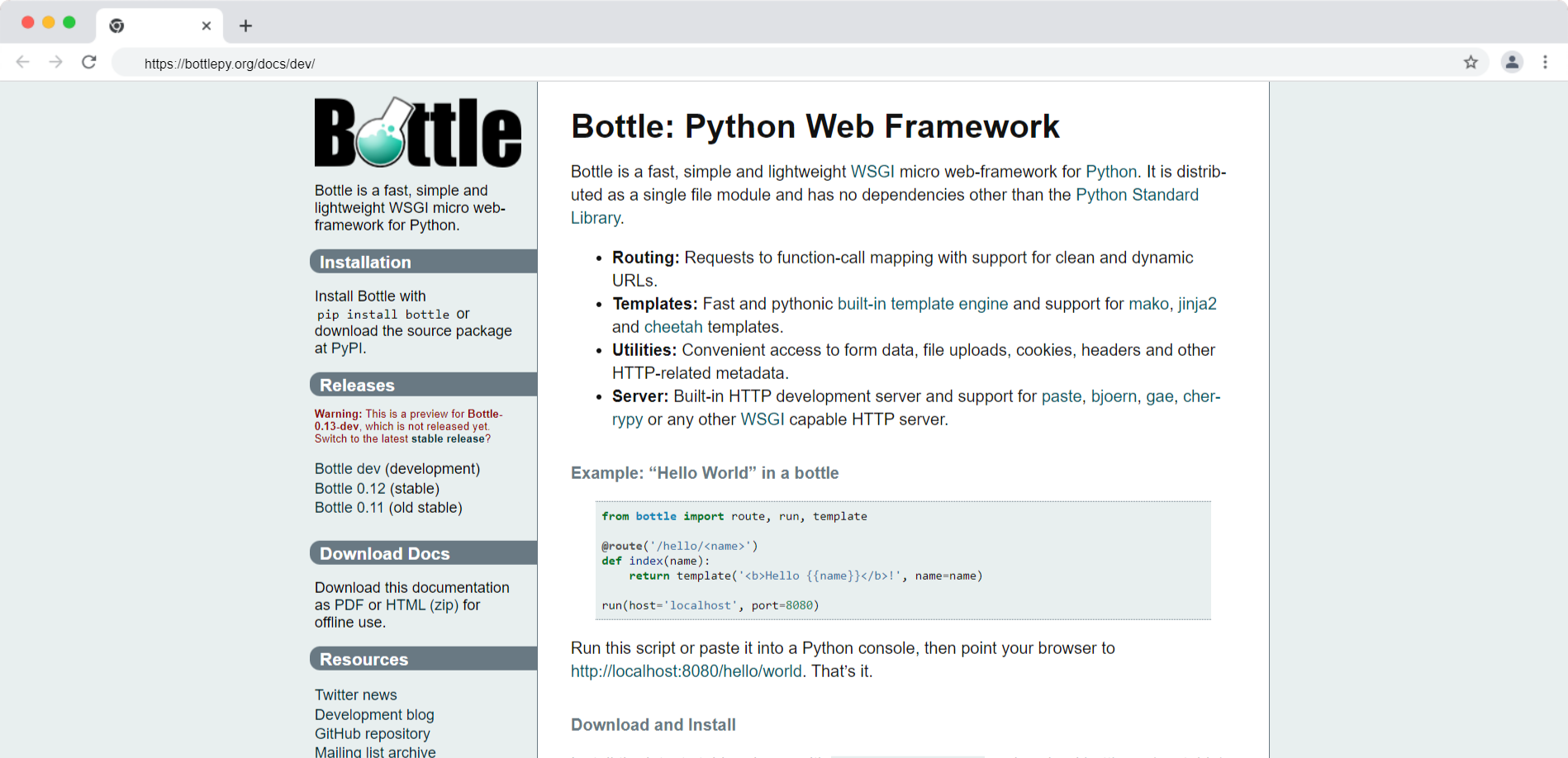
Highlights
- Built-in HTTP server
- It offers request dispatching routes with URL parameter support.
- Adapter for template engine, HTTP server and third party WSGI
- Cheetah, Mako, Jinja 2 compatible
- Has plugins for supporting different databases
Bottle allows you to work very closely with the hardware, thus mostly used for back-end development processes. Netflix uses bottle for running its web-interface.
Grok
Built on the existing Zope 3 libraries grok brings in along with it agile development experience for developers with its emphasis on convention over configuration and DRY (don't repeat yourself) principle.
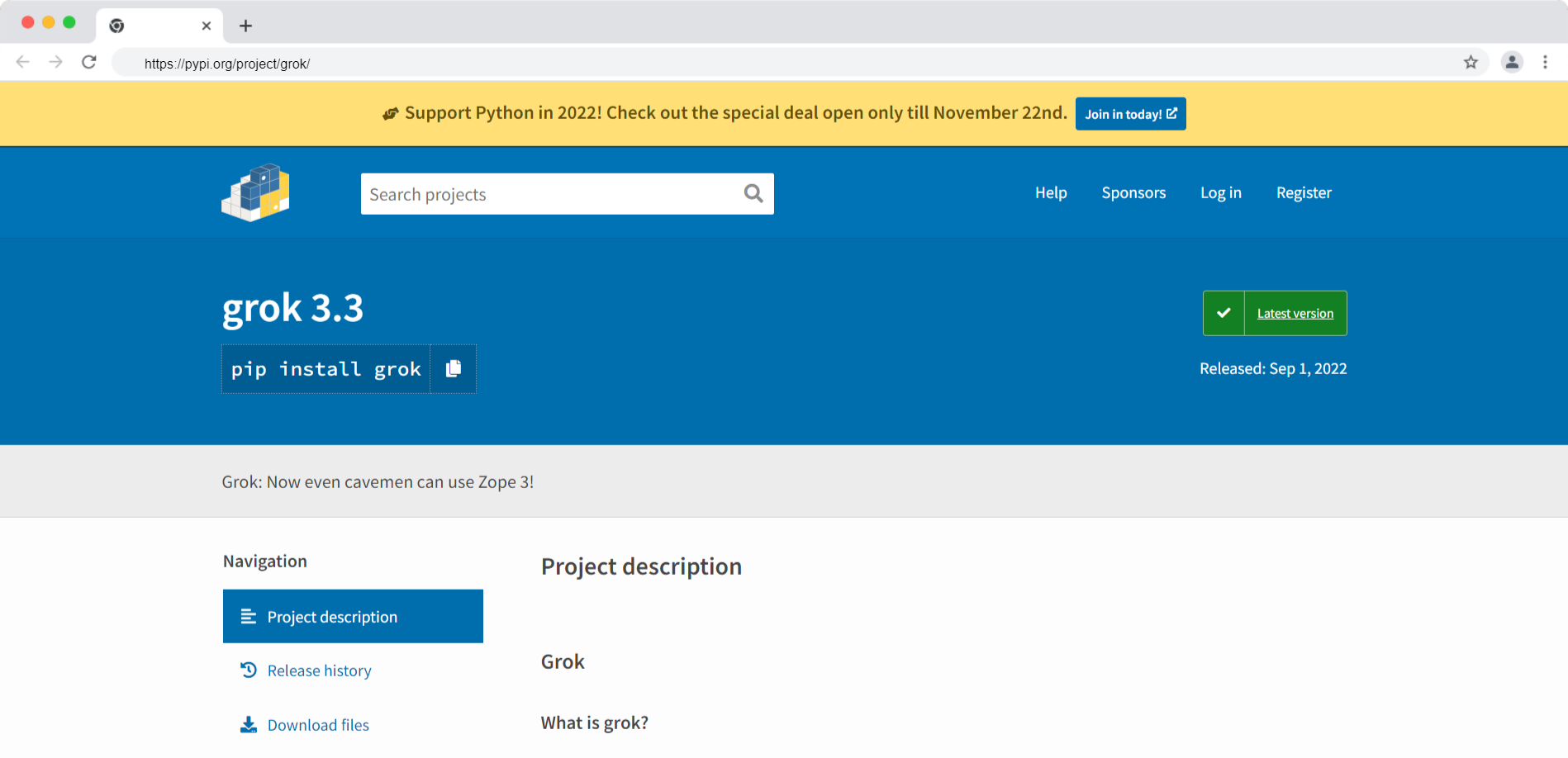
Highlights
- Equipped with agile programming paradigm
- Similar interface with Django, TurboGears and Pylons
- Integrated security system
- Zope 3 libraries
Grok is motivated on building easier web applications but at a faster speed than existing technology toolkits. It uses python for component configuration and has several implicit defaults and conventions.
CherryPy
CherryPy has a multi-threaded programming interface. It is one of the oldest frameworks ever developed. It is a highly capable long-standing framework with the ability to carry out file uploads, static, cookies etc. at once. It has a powerful configuration with plugin system.
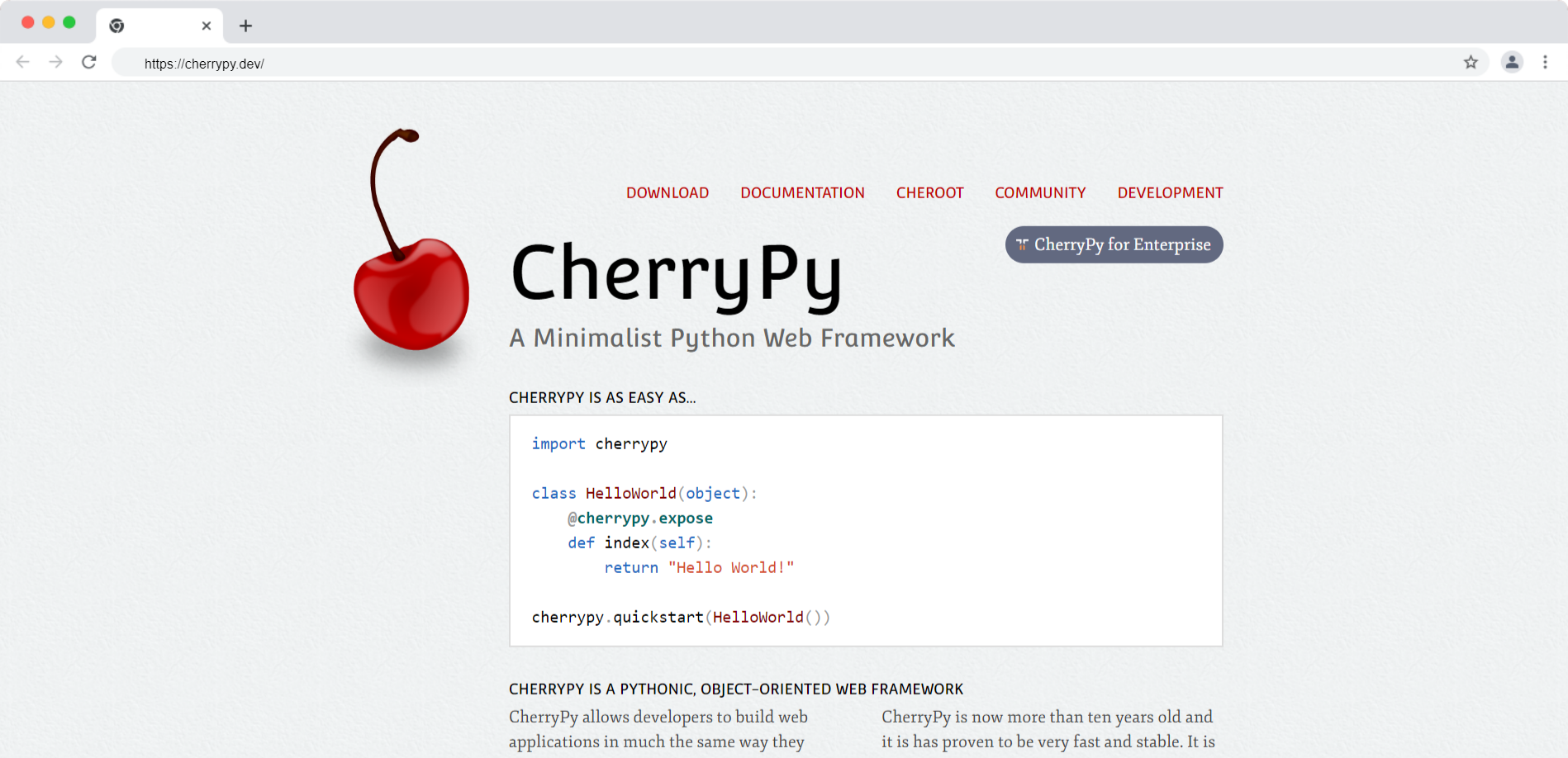
Highlights
- Object oriented HTTP framework
- Multi-threaded web server
- Creates stand-alone python applications
- Built-in functions like sessions, encoding, caching and authentication
- HTTP/1.1 compliant, WSGI compliant web server
Simple interface and user friendly nature makes CherryPy an excellent option for developers. It is adaptable to any technology using data access and template generation.
Flask
Flask is yet another microframework built for open-ended applications. But mostly it is used to build back-end programs. Flask includes a unit testing tool which supports secured cookies. Lack of specific tools and libraries, database abstraction layer and no form validation makes it lesser than a full-stack development program.

Highlights
- Supports unit testing
- In-built debugger, development server
- Restful request dispatching
- Aids Jinja 2 template and Werkzeug WSGI toolkit
- Supports cookies for enabling client-side sessions
- Responds to HTTP requests
This simple and incredible framework for full stack development doesn’t depend on any extensions, rather it allows the usage of any external libraries or tools required for making an application. It is mostly used for developing small-scale applications.
Sanic
Web-server for python 3.5+. Sanic is a blazing fast web framework for it is based on Magicstack’s uvloop event loop which is a replacement for python’s asyncio default event loop.
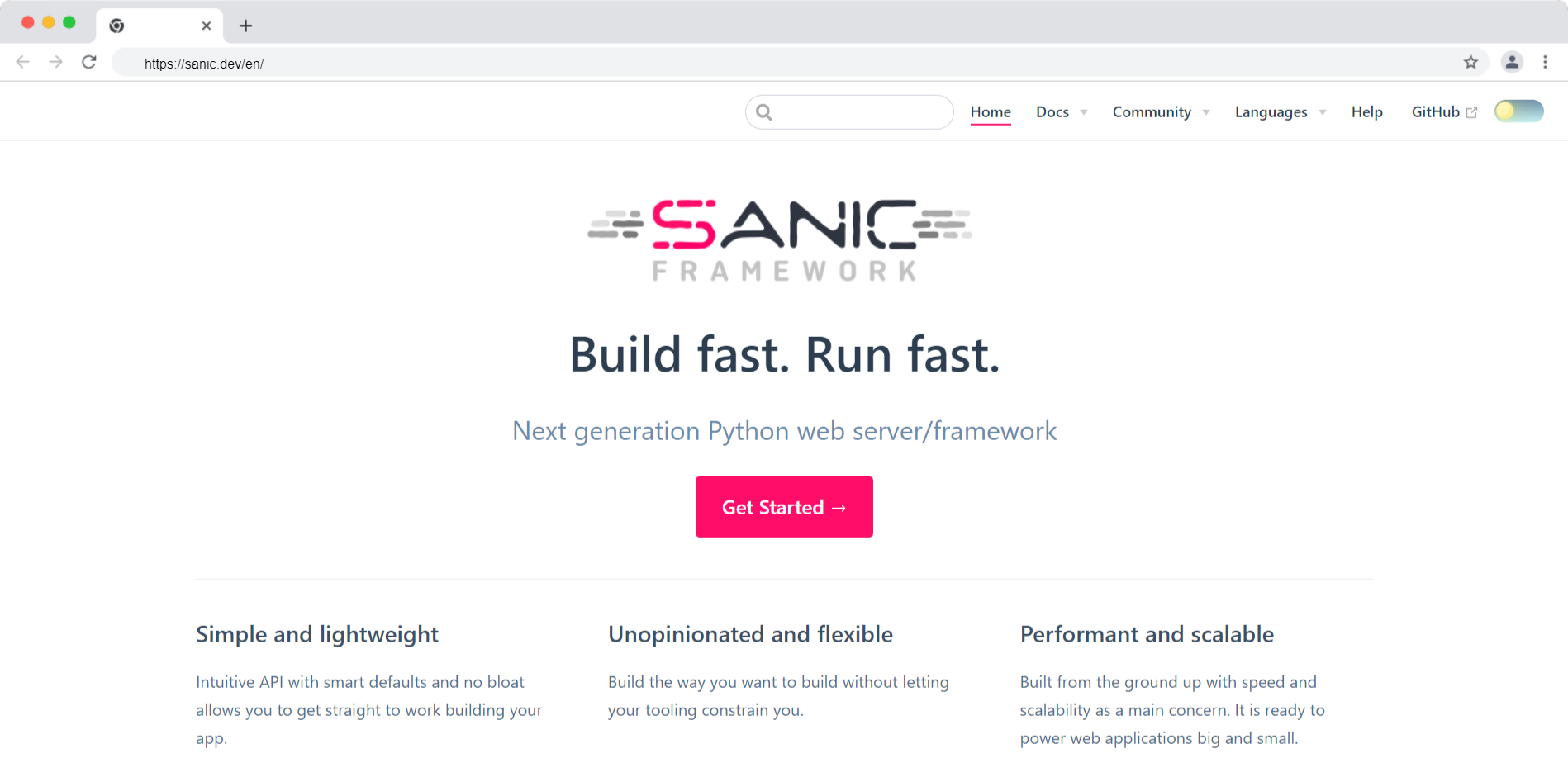
Highlights
- Uvloop makes it extremely fast
- Made for responding to HTTP requests quicker and easier.
- Syntax comparable to flask
With the ability to process a minimum of 33,342 requests per second, Sanic is definitely one of the fastest web frameworks out there.
CubicWeb
CubicWeb is a semantic web application framework using cubes instead of the routine models and views framework. It is full-stack apart from being free to use. Main highlight is the reusable components called cubes which are easy to read and debug.
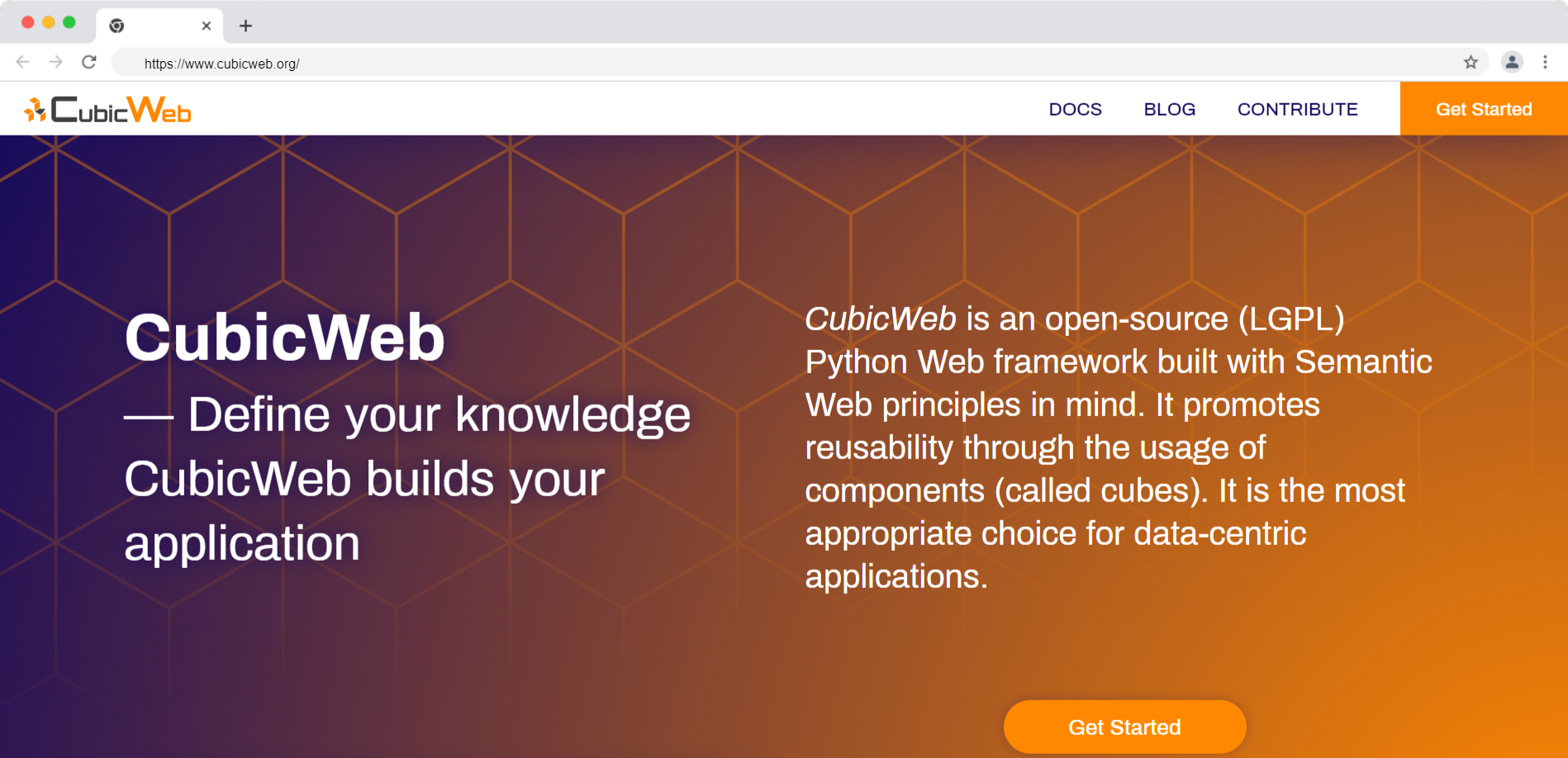
Highlights
- Supports multiple databases
- Security , workflows and reusable components
- Uses RQL - relational query language for data queries
- Supports resource description framework (RDF) and web ontology language (OWL)
The usage of reusable components (cubes) for carrying out functions make CubicWeb an appropriate choice for data-centric applications.
Pyramid
Pyramid is a small, fast , down-to-earth web application development framework in python. It requires python 3 for carrying out operations. The transparency and quality of this framework makes it a favorite among seasoned developers.
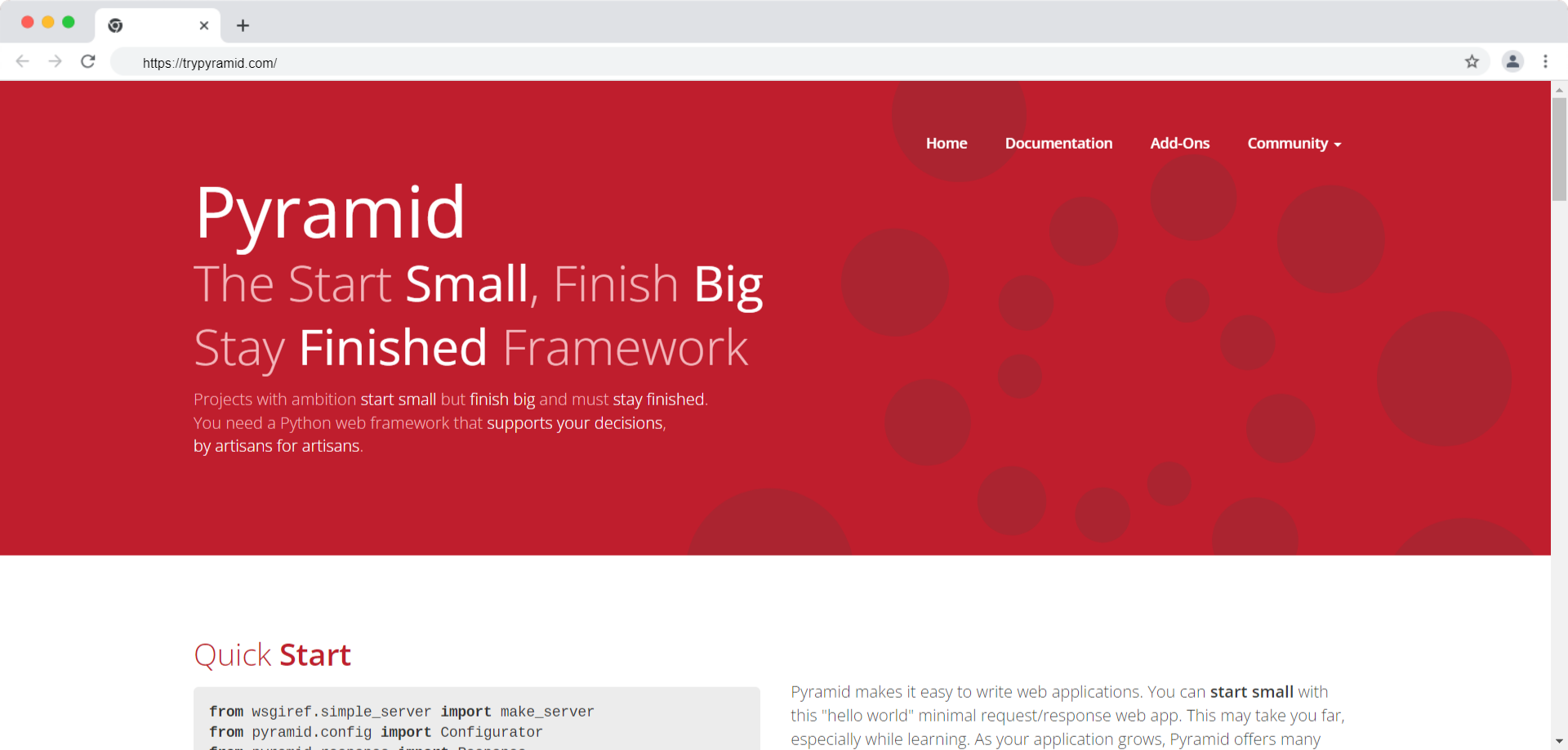
Highlights
- Can be used to develop both small and big applications
- Html structure validation and generation
- Approval and authentication are flexible.
- Routes setup, webhelpers and URL dispatch allow URL mapping
- All-embracing templating and asset details
Pyramid is a successor to pylons web framework project. It makes development and deployment of applications easy, fun and predictable along with higher productivity.
Falcon
Yet another microframework, falcon is a very popular development tool used by LinkedIn, OpenStack and Rackspace etc. mostly used to make configuration files and backend applications.
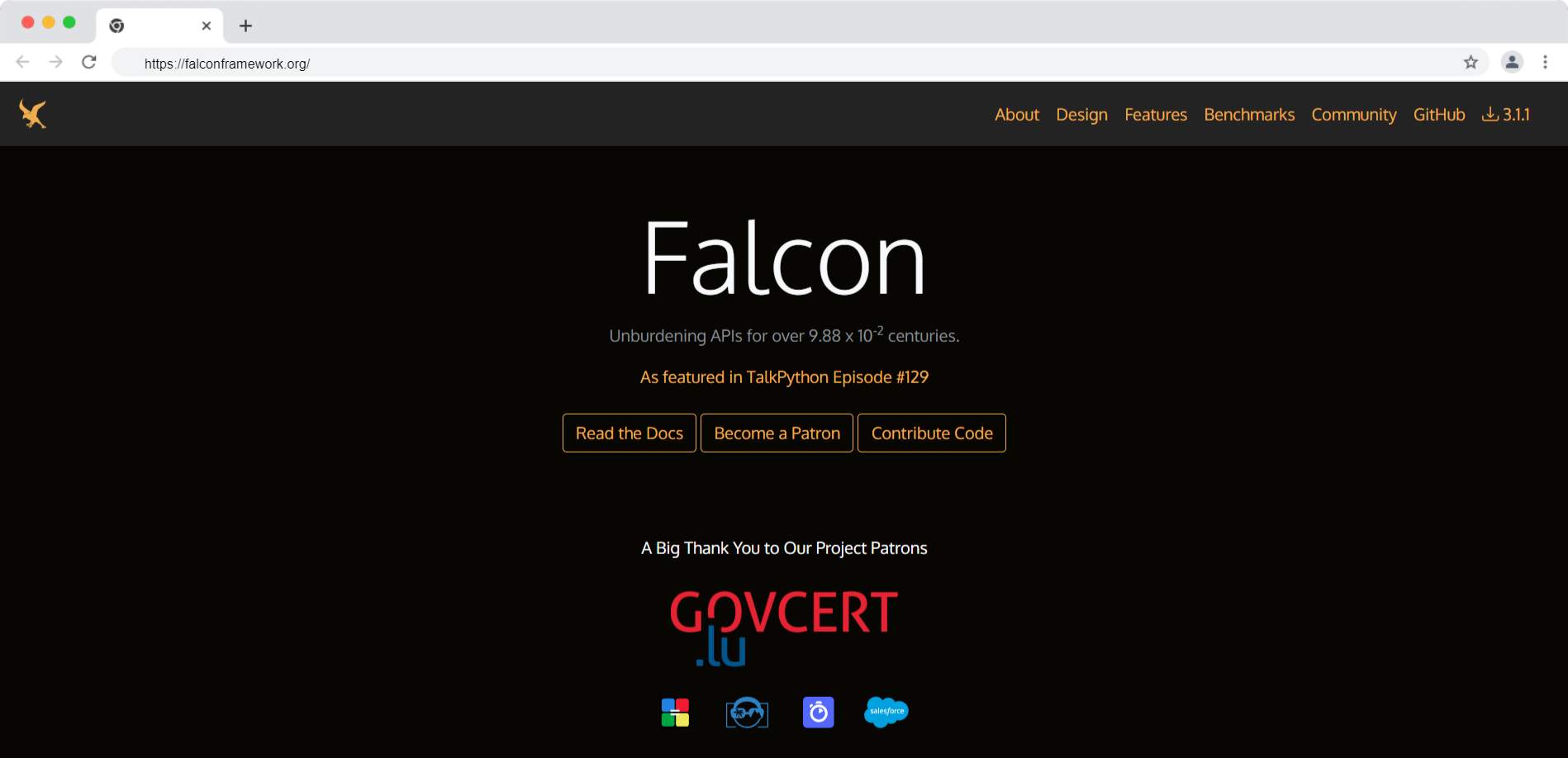
Highlights
- REST-inspired resource class
- Full code coverage
- WSGI helps for unit testing
- Highly optimized and extensible codebase
- Upfront exception handling
Falcon supports python 2.7 and 3. Its enhanced speed comes as a result of the language it runs on - Cython.
AioHTTP
Aiohttp is an asynchronous framework. It works as an HTTP and client side development tool. It is based on python’s asyncio library.
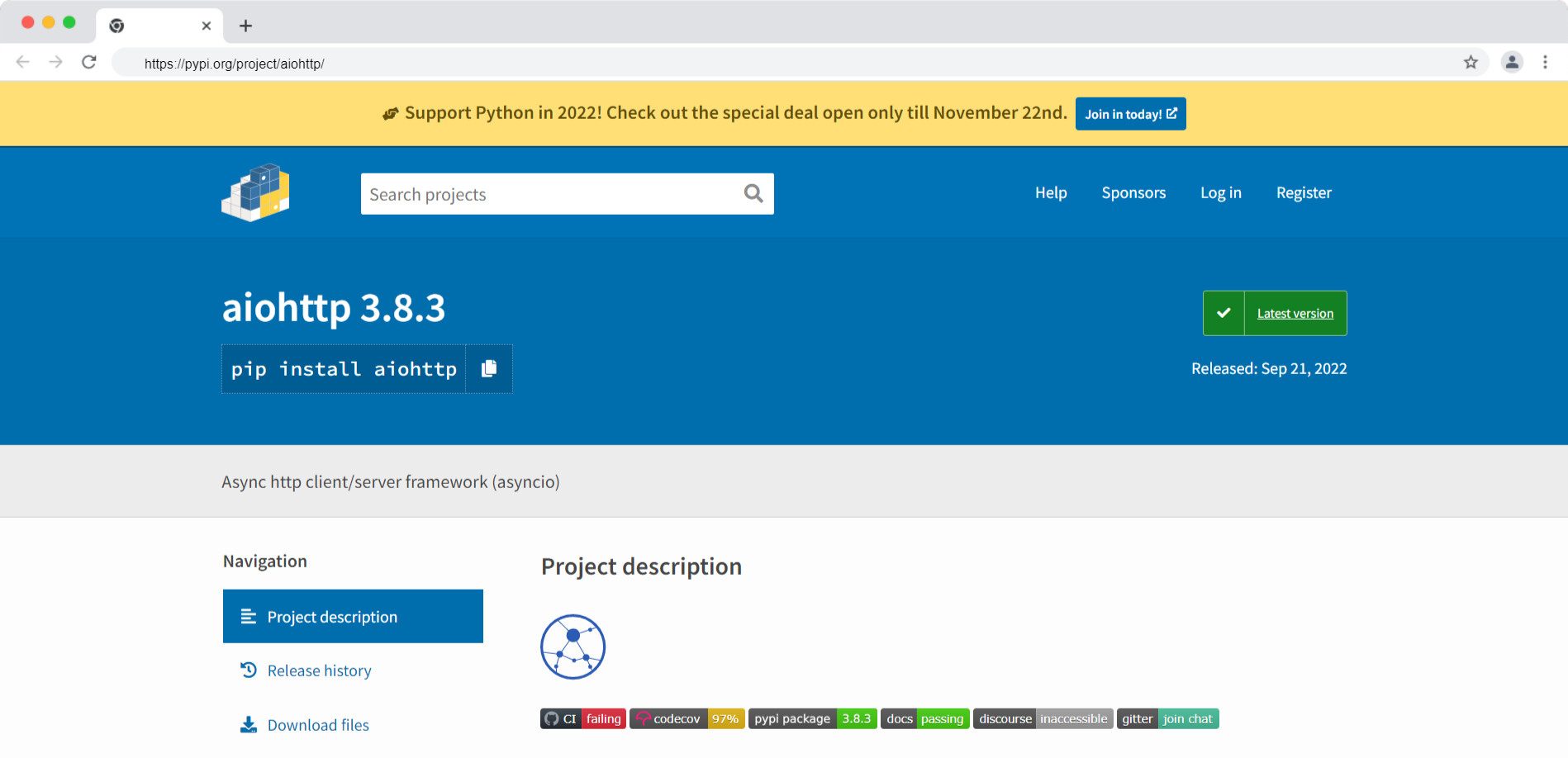
Highlights
- Provides middleware support
- Supports both HTTP and client side web sockets
- Pluggable routing available
Like flask, Aiohttp provides a request object and a router to redirect queries to functions that handle them.
Tornado
Tornado is a free and open-source library for asynchronous networking. It uses non-blocking I/O to handle more than 10,000 connections at the same time making it a high performance development tool.
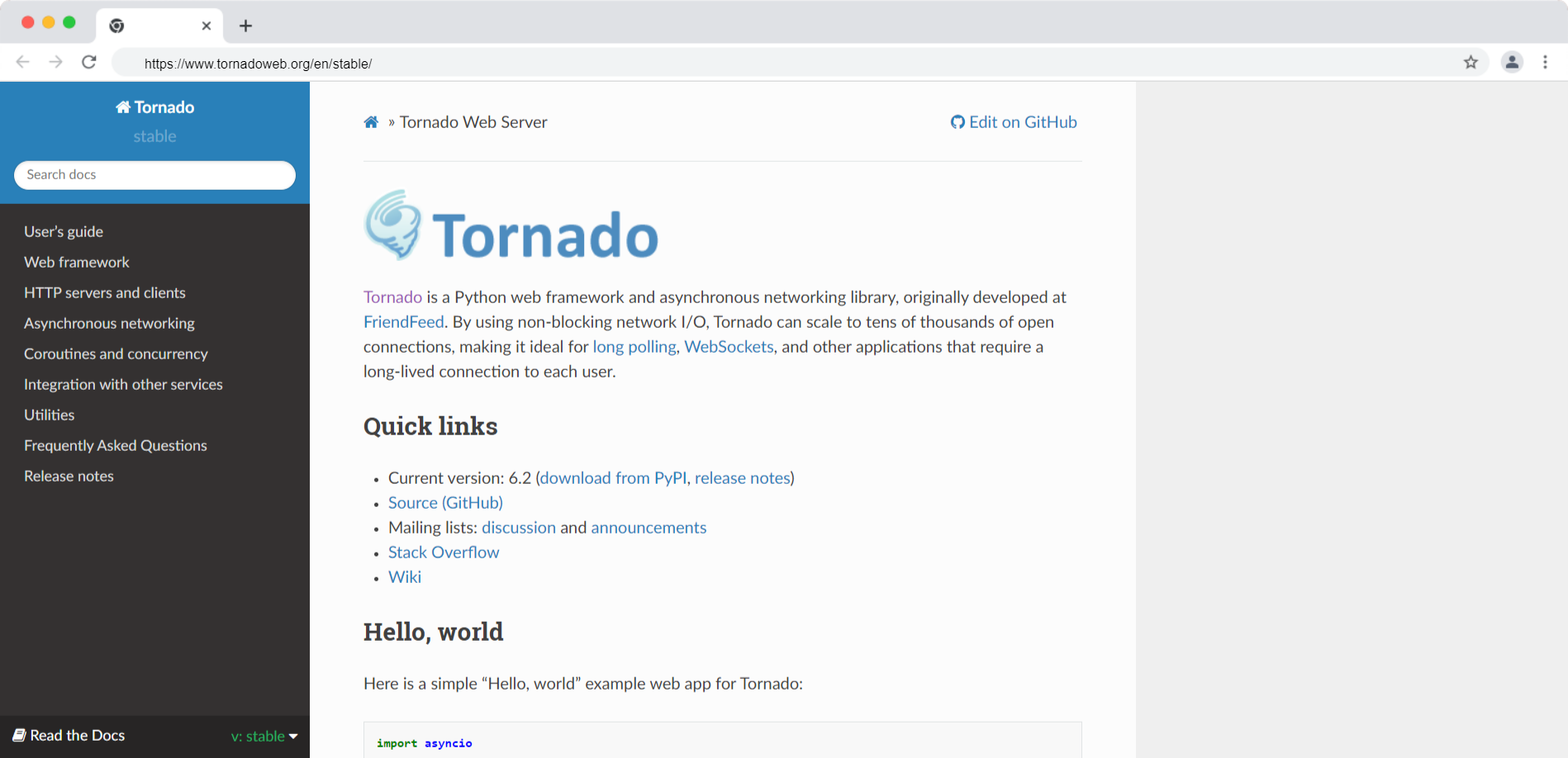
Highlights -
- Supports localization and translation.
- Supports user authentication by default
- Real-time services and non-blocking HTTP clients
- High quality output
- Allows web templating, interpretation
It is the best choice for high-performing applications which handle thousands of user requests at the same time. A distinguishing feature of tornado, is its threaded framework.
FastAPI
Relatively new, FastAPI is one of the fastest web-app building tool. It uses python 3.6+. There is no particular database coupled to it. So database of your choice can be used when accessing this framework.
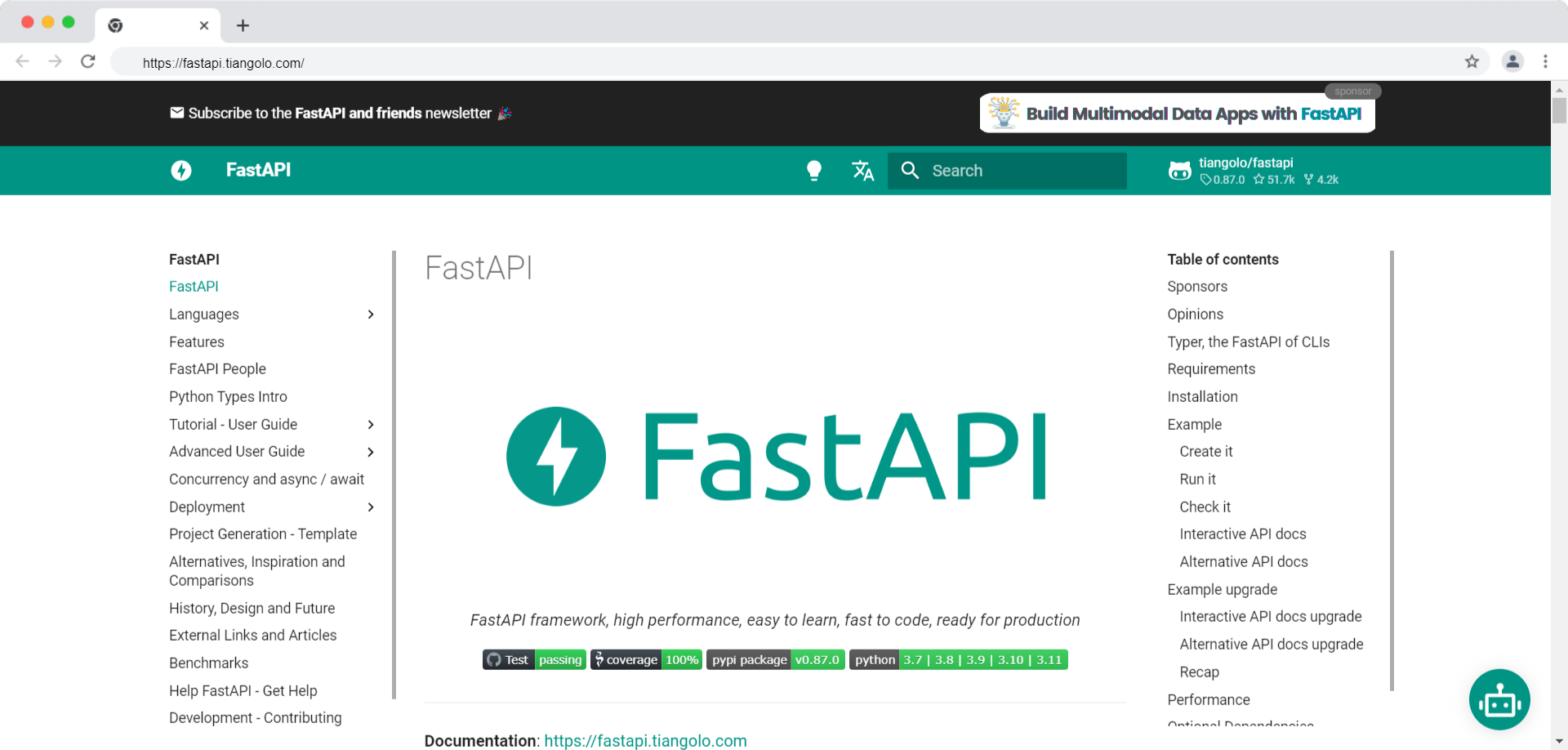
Highlights
- Rapid development of plugins using dependency injections
- Jinja templates can be incorporated
- Validates data and converts into codes.
- API Routers breakdown large applications into smaller sections
- Allows any WSGI application to run.
FastAPI is a top choice due to its incredible performing capacity. Errors are reduced by 40% while debugging is accelerated and develops application about 200-300 times faster.
Winding Up
Alas, we have come to the end of the list for best python frameworks available out in the market. Choosing the right framework is critical to the app’s success. There are still many more frameworks out there, or even being made when I ’am writing this blog.
For new developers, Flask can be a great option. It is relatively easy to use, with lesser coding at the same time delivers optimum performance.
Among microframeworks, CherryPy and Bottle are consistently ranked best for their amazing performance when it comes to building small-scale applications. Not only that, scalability is a prominent feature in these frameworks.
Django is the best in the market, any day if you ask me. Compared to the little learning curve it has, this framework has some extraordinary features as add-ons, you can learn them along with your web development as and when needed. Third-party additions are favorable to modify any framework to fit into your applications and Django can adapt such third-party drivers.
If you are only starting out and are confused about what to choose, I'd suggest you make use of this list and analyze their features thoroughly so that you get the right fit for your application.
Atatus Full Stack Python Performance Monitoring
Atatus tracks every request made to your Python applications without requiring you to modify the source code. Find out exactly how your methods, database queries, and outside requests affect your users' experience. Python Monitoring can track the amount and type of HTTP status code failures and application crashes.
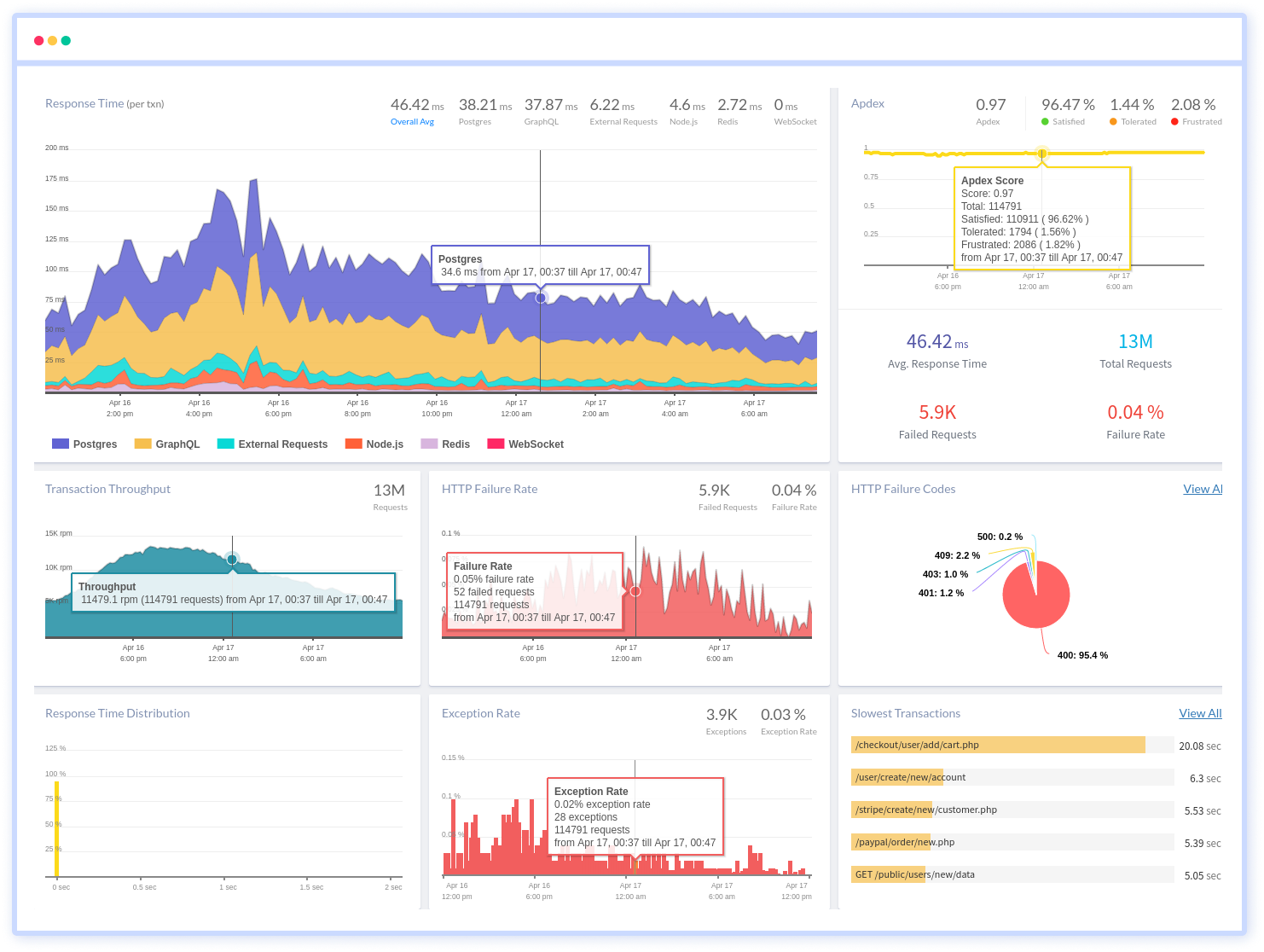
Every Python error is recorded via error tracking, full stack traces are captured, and the exact line of source code is marked to facilitate bug fixes. Analyze API failure rates and application crashes to spot unstable APIs or outside services. Receive notifications for application exceptions and errors by email, slack, pagerduty, or webhooks.
#1 Solution for Logs, Traces & Metrics
APM
Kubernetes
Logs
Synthetics
RUM
Serverless
Security
More

